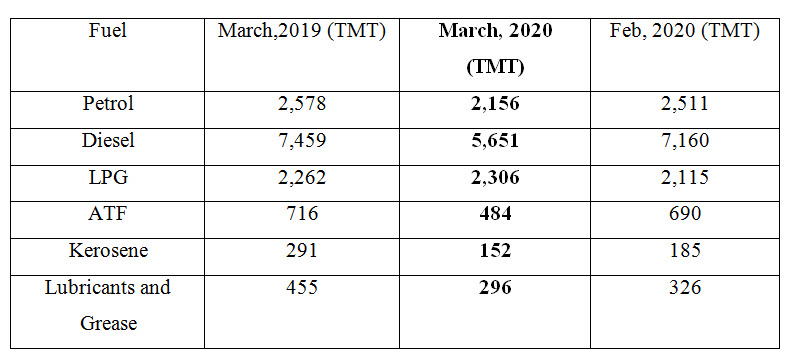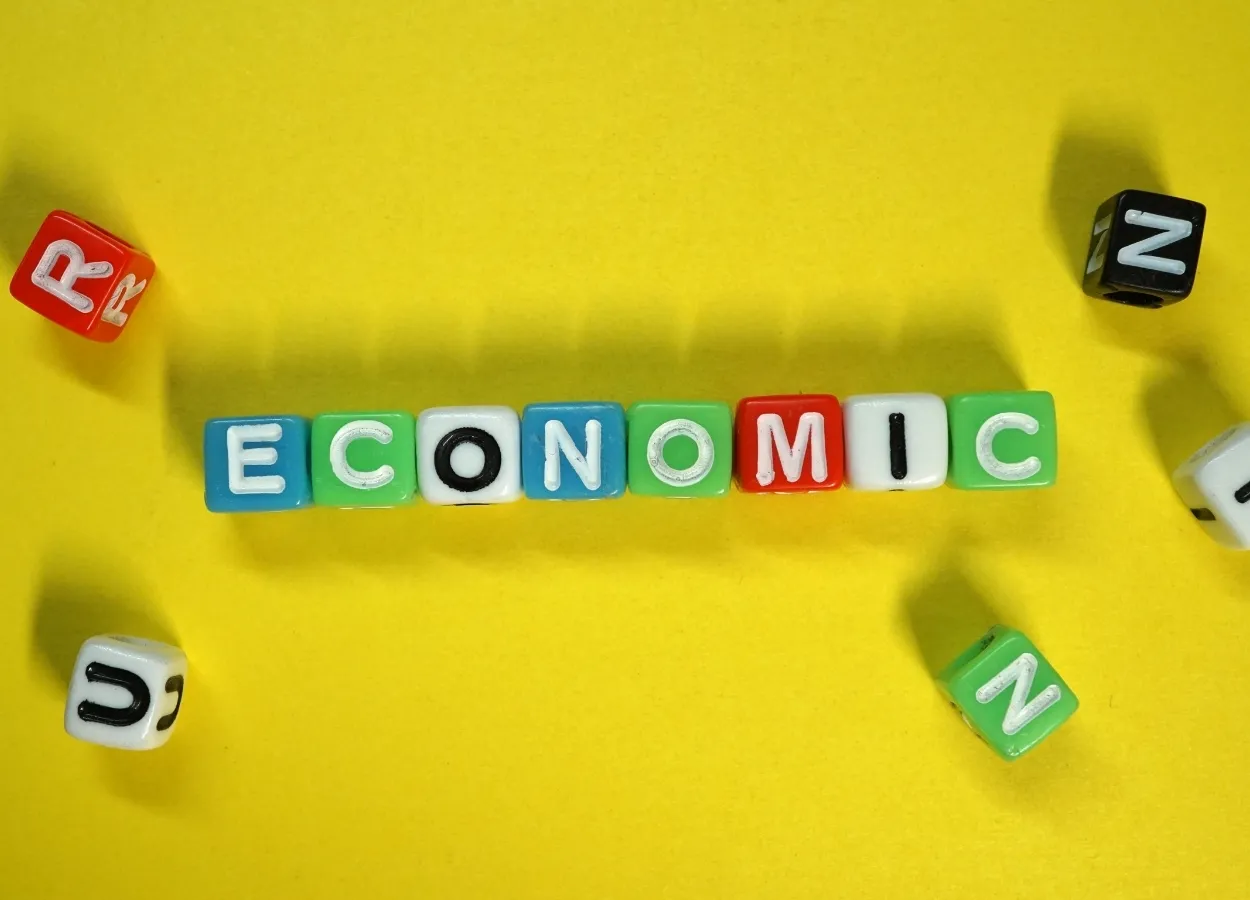About Authors
Manas Kumar Jha1, Anjali Sharma2, Tarun Virmani2
1. Institute of Pharmaceutical Research, GLA University, Mathura (281406)
2. School of Pharmaceutical sciences, MVN University Palwal, Haryana( 121102)
ABSTRACT
Corona virus or SARS-CoV-2 virus has been emerged as a global pandemic which is said to be emerged from Wuhan city, China. This deadly virus has been reported to be very dangerous as it has affected more than 180 countries across the globe. In the human body respiratory system is the main target of this deadly virus. In India, each sector has been a victim of this virus irrespective of fields from agriculture to tourism or may be from education to supply chain and logistics. There are several testimonies which hereby prove that this pandemic has greatly affected the different employment sectors that has caused a great impact on the livelihood of the people not only economically but also socially as well as emotionally. Therefore, the domestic life of the people has also become an important aspect to be looked upon and cared for. In this review article, we will discuss various impact of the virus on livelihood of people, social as well as the economical sectors. We have also highlighted the steps that have been taken by the Indian government to tackle this situation. Different NGOs have also shouldered the responsibility in order to curb the attack of virus.
INTRODUCTION
The past decades have always challenged the humans with a number of viral infections such as HIV, Herpes, Influenza, etc. The globally spreading and a newborn infection have its origination from Wuhan city, Hubei, China. Till now it is evident that the transmission of COVID-19 virus is from the droplets of saliva or any nasal discharge from an infected person in case of coughing, sneezing or even talking. This virus has infected millions of people over the globe and is continuing its path till date as no vaccine or drug for its cure has been discovered henceforth. Still, the hope relies on the ongoing traditional and western research on medicines. There are several testimonials so far being known and as stated by WHO, till date this corona virus has affected more than 190 countries around the globe.
The virus is basically the novel corona virus or SARS-CoV-2 which ultimately affects the respiratory system. Although covid-19 is so far being declared as s global pandemic still no cure to this has been analyzed. This poses an urgent need to overcome the present scenario and need of an hour is the vaccine development. Though many combinations of medicines have been given to patients still the need is not yet fulfilled. In verge of this, several countries have decided to enforce certain norms for the betterment of the society such as border shutdowns along with various travel restrictions and quarantine centers have also being established which could hinder the upcoming global crisis and recession which may cause misery for the poor with massive job losses and insecurity in health, food and other sectors. For better understanding, we summarize the effect of corona virus on different sectors of India.
Economical area
1. Agriculture-
COVID-19 has shown some indigestible activities in health sector and supply chain. Initial reports have shown that the lack of migrant labours for the harvesting and other related activities of the farming basically in northern parts of India where wheat and pulses are grown are on a red alert. Additionally to this, unavailability of transportation and other related issues have caused disruptions in supply chain management. It is also witnessed that the consumers are found to pay more amount than desired though the price have been declined. The closure of several hotels, sweet marts and tea stalls has badly hit the milk industry’s supply and management. Rumors that ‘Chicken’ being the carriers of COVID-19 have badly hit the poultry farm due to misinformation. A few steps to be implemented for a smooth and efficient running includes-
1. Proper implementation of the guidelines issued by the government.
2. Smooth functioning of the food supply chain is essential for the food security.
3. Proper safety of the farm animals must be done with the best possible ways.
4. Urgent help to the small poultry farmers and milk vendors to be looked after.
5. Lockdown has made the e-commerce demand more and so it should be promoted and the needs to be fulfilled.
6. Transparency with the markets with involvement of both the private and government sectors.
Government warehouses are overflowing with almost 71 million tons of rice and wheat and in order to protect this, the government is offering universal coverage for the past few months. Several nutrition programmes such as the mid-day meals along with the ICDS and Anganwadis are working day and night and rendering their services. Apart, several state governments have also joined hands to help. One such state is Kerala, ensuring food and dietary supplements at every doorstep.
2. Petroleum and oil-
The present scenario has basically affected the consumption of crude oil all over the world. It is very shocking to see that the demand of petroleum has shown a substantial decrease in the last ten years, as reported by the ET Energy World up to 2009-10. It was seen that in the month of March 2020 itself, a decline of about 18% with a rate of 16,083 Thousand Tonne (TMT) was reported by the ministry when was compared to the same month a year ago. When seen for diesel, the decline was about 24.23% to a level of 5,651 TMT in March, 2020 as compared to the same a year ago. When elucidating on the financial year 2019-20, the consumption of diesel decreased up to 1.13% which was the maximum decline past decade. This has badly hit the Indian economy as diesel being the primary source of liquid fuel used in various vehicles, passenger vehicles, apart commercial use is also seen. Evidently, the petrol and diesel price narrowed and also improved the conditions of roads but this pandemic showed a decrease of about 16.36% which made up to 2,156 TMT in march as and when compared to the corresponding a year ago. Astonishing facts were from the Aviation Turbine Fuel (ATF) which decreased to 484 TMT with a percentage of 32% in March 2020, when compared to the same a year ago. It was only the LPG that showed a spike increase for about 2% reaching up to 2,306 TMT in March.

3. Manufacturing Industry-
Several surveys have showed that the manufacturing sector is almost at a stand-still. It is only the rice milling sector where production has dropped to half. Several sectors had already experienced pre-lockdown of which the supply chains and the idle economy are affected. The symbiotic relationship between the MSMEs and other sectors has also stopped functioning which results in reduced demand and cancellations of orders. Even the demands are also not met, for instance, the demand of paper by the Pharma industry, food and hygienic applications are still not worth it. In order to lessen the burden, certain ways are adopted by MSMEs such as-
1. Reduce the expenses on non-essential products.
2. To secure and procure income.
3. Access additional working capital.
4. Appeal the government for financial support.
4. Education –
The very first sector to be affected was the learning and schooling of the growing ones. Only a handful of private schools which have got sufficient money could go for the e-learning process. The students from government schools had been devoid of both the academics and the mid-day meals. Their learning process is hindered. Additionally, they are also burdened with the economic and social stress which is not apt for them at all. This pandemic has not only affected the school going students, but also the seniors enrolled in different courses in collages and different universities across India. A large number of Indian students have headed to home while many are still stuck in different states as well as around the globe. If the present scenario persists, there will be a sure decline in the demand of international education. The recession and crisis are round the corner while for the recent graduates, the bigger concern is the job withdrawal. It is true that the pandemic has changed the traditional chalk and board system to the newly advanced technologies but still the overall growth is hindered. A strategy is to be building up to overcome the declining Indian economy along with the education system. This could include-
• Open-source digital learning solutions and Learning Management Software should be adopted so teachers can conduct teaching online. The DIKSHA platform, with reach across all states in India, can be further strengthened to ensure accessibility of learning to the students.
• Inclusive learning solutions, especially for the most vulnerable and marginalized, need to be developed. With a rapid increase of mobile internet users in India, which is expected to reach 85% households by 2024, technology is enabling ubiquitous access and personalization of education even in the remotest parts of the country. This can change the schooling system and increase the effectiveness of learning and teaching, giving students and teachers multiple options to choose from.
• Strategies are required to prepare the higher education sector for the evolving demand–supply trends across the globe—particularly those related to the global mobility of students and faculty and improving the quality of and demand for higher studies in India
• It is also important to reconsider the current delivery and pedagogical methods in school and higher education by seamlessly integrating classroom learning with e-learning modes to build a unified learning system. The major challenge in EDTech reforms at the national level is the seamless integration of technology in the present Indian education system, which is the most diverse and largest in the world with more than 15 lakh schools and 50,000 higher education institutions.
5. Health care sector-
The health care department has been emerged as the epicenter of the corona virus outbreak in India as well as all over the world. The private sector has shoulder the responsibilities whether it be in testing or by employing any other demands to fulfill the need of the government round the clock. It is seen that the private sector is fully ready but still it is facing a dual burden that is of (a) Investing additional manpower, equipment, consumables and other resources to ensure 100 per cent preparedness for safety in the hospital(s) and eventual treatment of patients, if needed. (b) Experiencing a sharp drop in OP footfalls, elective surgeries and international patients. This department has also been facing the loss all over and will continue for a couple of months. But, this sector will earn its benefit from the awareness being spread by the government about the hygiene and health care of the individuals. Guidelines for biological disasters have been in existence since 2008 and Biological & Public Health Emergencies (BPHE) was added as a part of the National Disaster Management Plan (NDMP) itself in the most current version updated in November 2019, with the objective of enhancing the resilience of health systems by integrating disaster risk reduction into all levels of healthcare. However, within two months of releasing these guidelines, it was clear that the planning and implementation was required as of yesterday. A few points need to be kept in mind regarding the outbreak as it ultimately affects the healthcare sector are as follows-
• A long term impact can be achieved by spreading community awareness towards hygiene.
• Strengthening of government infrastructure along with the public-private partnership.
• Internalization for Pharma supply chain.
• Make in India focus for the medical equipments.
• Preference on 3-T that is Telemedicine, Technology demand and Training of medical staffs.
6. Pharmaceutical Sector-
It is very evident that the pharmaceutical sector of India is the third largest drug producer in terms of volume in the world. Our country supplies millions of generic medicine at an affordable rate and is easily approachable by the needy which is not only in our country but supplies globally also. As estimated, the sector is on its way to earn around six billion dollars by the end of this year on its Active Pharmaceutical Ingredients (API). As per the data by Indian Pharmaceutical Industry, the crucial and integral part of the industry is the APIs in order to overcome this pandemic. In case of generic drug manufacturing, it is very well known that the APIs which is supplied globally is sourced from our country, which also supplies approximately 30 percent of the generic APIs used in the US. However, Indian manufacturers rely heavily on APIs from China for the production of their medicine formulations, procuring around 70 percent from China, the top global producer and exporter of APIs by volume. Certain strategies are to be implemented for elevating Indian API production. Presently, the Indian government should look in order to decrease the load on technical and financial barriers. Indian government did an applaud able work by proposing an incentive package of 13.76 billion Indian Rupees (approximately $181 million) for the promotion of domestic manufacturing of critical key starting materials, drug intermediates, APIs and medical devices.
7. Aviation –
This pandemic is likely to affect almost 29 lakh job in the aviation sector, dependent industries and the global airlines, as said by the IATA. The commercial flight facility has been suspended in the country past few days which not only affects the aviation but also join hands for the Tourism department. The International Air Transport Association said that the passenger traffic has declined around 47% and has hard hit the employment of around 29,32,990 jobs. An estimated decline of 8.97 crore is on the ‘passenger demand impact (origin destination volume)’. The largest decline will be evident on revenue drop of USD 113 billion in the present year of 2020 as compared to last year results in the Asia-Pacific region.
8. Banking-
On India, the report said "the NPA ratio in India is likely to fare similarly to China's (1.9 per cent 2 per cent) but the credit costs ratios could be worse, increasing by about 130 basis points," the rating agency's credit analyst Gavin Gunning said in the report. Gunning said there are concerns that the corona virus will spread faster, further, and for longer. While banks are not as exposed as the corporate sector during the initial stage of the pandemic, the strain on lenders could ultimately be profound. Banks face a second-order hit compared with the corporate and household sectors.
The RBI in its seventh bi-monthly monetary policy announced on March 27, reduced the repo rate by 75 basis points to 4.40 per cent. It announced to provide Rs 3.74 lakh crore liquidity to banks through reduction in cash reserve ratio, by conducting targeted long term repos operations (TLTRO) and by increasing the limit for marginal standing facility (MSF) to 3 per cent.RBI also allowed a repayment moratorium for three months on all term loans outstanding as on March 1, 2020, to borrowers of all commercial banks, including regional rural banks, small finance banks and local area banks, co-operative banks, and NBFCs, including housing finance companies and micro-finance institutions.
9. Tourism-
Past years have made it possible that the tourism sector promotes the country’s economy and overall growth. In order to rejuvenate and a break away from mundane routine, travel has become a necessary these days. But this pandemic has made a standstill for all these. The Indian Tourism has made the revenue loss of 1.25 trillion in the year due to the pandemic outbreak and the shutdown being imposed all over the globe. The revenue reported that in the month of January-February, the loss was up to 50% which inclined to 70% in March itself. Expected loss of about 69,400 crore is to be estimated in the month of April-June due to suspension of all the promoting activities. The hard-hit tourism sector shows on all its geographical arenas such as leisure, cruise and lounges, hotels, corporate and other MICE (Meetings, Incentives, Conferences and Exhibitions). Travel restrictions have not only being imposed in our country, but are prevalent all around the globe.
10. Real Estate-
This pandemic has made the real estate to mark its lowest level when compared with past years. Not only the commercial real estate has been affected, but even the residential real estate has marked its response in this pandemic. It is believed that this activity will continue to exist for a couple of months. The future rental appreciation has also declined to 50% of the stake holders. It is to be noted that the demands of the residential sector which were not fulfilled will only resume their previous works and new launches may be stagnant for this period due to lack of labour and construction halts. Stressed asset fund (AIF) of 25,000 crore was planned which was like a silver lining to the last mile funding to the stuck housing plans.
11. Sports-
Several days locked in house where one cannot discuss the live scores, no adrenaline to surge in anticipation, nothing to watch for post matches or any discussion on personal or groups regarding the trending result or being refused for hearing the expert commentary is all being witnessed in this pandemic as the sports have been all shut. Not going out for training and their daily routine has also been affected which ultimately affects the fitness of our beloved sportsperson. Being home locked, only a few exercise could maintain their growth and add to their fitness lifestyle. Each sport will now have different protocols to be imposed where direct contact like in wrestling, kabaddi, judo, and boxing is involved to games where direct touch is not much such as golf or cricket. A former Indian wicketkeeper and a well known coach told THE WEEK that this lockdown would be difficult to overcome. In case of cricket, he said, it is a team game which encompasses each and every individual’s performance regardless of age group. He also added that this will surely be very difficult for junior cricketers. He also mentioned that the coaches and other staff members have to work day and night with appropriate strategy to combat this pandemic and its influence in the sports industry.
12. Television and Broadcasting-
The television consumption showed an increase in the present day of the calendar as reported by BARC India. From March 21-27(week 12) witnessed around 11% viewership surge when compared to pre covid period (January 11 to 31). The rise was from 560 million to 622 million summing up to rise of 62 million. The re- run of Ramayana on Doordarshan with a Sunday evening broadcast showed a spike increase to 51 million views. The week 12 marked 1.2 trillion on weekly viewing minutes that is total number of minutes that is given to television viewing. The number of channels consumed per viewer jumped to 22 from 16 in a week. While the time also increased from 3 hours 46 minutes to 4 hours 39minutes which was an average time spent by a viewer in front of television. It was a massive increase in the general news channel genre with an increase from 7% to 21%.
13. Food sector-
The second most populous country of the world, India is under continuous pressure. Though the country progressed in economic and financial welfare, hunger and poverty still strike it with a hard hit. The fear of virus spread more than the virus itself. Though the imposition of lockdown was a wise decision and was done at the right time. Still, for the people who earn on daily basis such as small vendors, vegetable and fruit sellers, small stall owners have been facing worst situation. Implementation of nation-wide lockdown and freezing of transportation made the temporary workers to head home barefoot resulting in chaos all over. Migrants were given shelter and food but still the conditions were not favorable.
Central Finance Minister in New Delhi, Ms Nirmala Seetharaman announced 1.7 trillion rupees (USD 22.6 billion) relief package to take care of food security measures for the poor. It was funded by the Prime Minister’s Gareeb Kalyan Scheme. Their action helped the poorest of the poor to cope with the hardship. In order to tackle food insecurity in the country, the minister announced the distribution of free provision of 5kg of rice or wheat per person, 1 kg of pulse per household along with free cooking gas monthly for the next three months. A second economic stimulus plan worth 1 trillion rupees (USD 13 billion) is sanctioned to aid small and medium businessmen mainly in the agricultural and food sector. These large scale interventions were the need of the hour and the government was successful in providing the vulnerable groups such as farmers, daily wage earners, women, self-help groups and poor senior citizen the support necessary in this unprecedented times.
The above models were immediately adopted by other states like Tamil Nadu, Punjab, Haryana, Karnataka and Andhra Pradesh to deal with the serious issue of hunger. These measures were, in fact, additional to the 5 kg of subsidised food grains (wheat at Rs 2/kg and rice at Rs 3/kg) of monthly ration per household provided under the National Food Safety Act, 2013 for two-third of the Indian population who are below the poverty line.
As the agricultural activities were at stake, the Indian Council of Agricultural Research (ICAR) became the focal point for managing activities in the country under the umbrella of the Ministry of Agriculture and Farmers Welfare and implemented the following actions.
1. ICAR started to assess the possible impact on agriculture and allied sectors and provided measures to lower its negative effect on the local food system.
2. Crop-specific safety measures regarding harvesting, post-harvest operations were advised to the farmers by ICAR experts.
3. Special attention was given to Rabi season crops like wheat and barley as their harvesting time is around the corner.
4. Experts also advised farmers to postpone wheat harvest which was about to give record harvest after the great monsoon.
5. Responsibilities were given to local field agencies to ensure hassle-free movement of agricultural produce and related machinery to reinstate farming activities.
Social
1. Domestic Violence-
Lockdown and isolation have undoubtly fuel the domestic violence which includes emotional, sexual abuse which is accompanied by physical assault. The home makers are prone to this. The time spent means that the vulnerable people are more exposed to such assaults and violence. Financial insecurity, stress which comes from uncertainty has shown intimate partner violence and aggression at home.
2. Personal gatherings-
The ‘stay-at-home’ orders are strictly being imposed which anyhow prevents the personal gatherings. It is seen that these large gatherings can cause the virus outbreak easily. It can be prevented by application of e-gathering, that is, gatherings through telecom communication or teleconferencing. In order to reduce the boredom, balcony sing along concerts are being implemented in flats and apartments which not only boosts up one’s energy but also reduces mental depression.
3. Religious performance-
This pandemic has affected the religious belief of different individuals. This includes the cancellation of worship of the people, avoidance in any ritual ceremony such as marriages at a large scale with great pomp and show, withdrawal of pilgrimages from different part and the closure of festivals at any scale which was done outdoors.
4. Home video gaming-
This pandemic has also affected the video gaming section of the country. The online gaming has boosted up fast few days as people prefer home isolation which makes them more fascinated towards e-gaming. This may act as a coin of two sides with a negative impact on mental health and illness. This not only affects the daily routine of people but also makes them aggressive as people make their game a life style adaptation.
CONCLUSION-
This pandemic is vital for the Indian Economy. The scenario which is prevailing all over the world was sufficient enough for the officials to make correct plans and execute them. The bold decisions by the central government in combination with the state government in order to tackle this pandemic were a good step. The NGO’s and different sectors joined hand and shouldered the responsibility in order to curb the virus attack. Each individual gave their best by “breaking the chain” which was done by staying indoors and supporting the frontline warriors. Where there is a new fear of financial crisis and recession all over the globe, this time has made an urge strong companionship and leadership in the social as well as economic sectors of the country as well as for the world. The need of an hour is the relief measures that are to be implemented with utmost responsibility. Long term planning is to be carried out for this crisis. A wide spectrum socio-economic reform is to be carried out in a synchronized manner by re-boosting the present plans and also implementation of future goals.
REFERENCES:
1. Addressing COVID-19 impacts on agriculture, food security, and livelihoods in India | IFPRI : International Food Policy Research Institute [Internet]. [cited 2021 Mar 2]. Available from: https://www.ifpri.org/blog/addressing-covid-19-impacts-agriculture-food-security-and-livelihoods-india
2. Covid-19 impact: India’s petroleum consumption falls to 10-year low [Internet]. [cited 2021 Mar 2]. Available from: http://www.infraline.com/infralinekb/detail-search/1/255291/3/Covid-19-Impact-India%E2%80%99S-Petroleum-Consumption-Falls-To-10-Year-Low
3. India’s manufacturing reels from the impact of COVID-19 | UNIDO [Internet]. [cited 2021 Mar 2]. Available from: https://www.unido.org/stories/indias-manufacturing-reels-impact-covid-19
4. e-learning: COVID-19 Pandemic: Impact and strategies for education sector in India, Government News, ET Government [Internet]. [cited 2021 Mar 2]. Available from: https://government.economictimes.indiatimes.com/news/education/covid-19-pandemic-impact-and-strategies-for-education-sector-in-india/75173099
5. Chatterjee K, Chatterjee K, Kumar A, Shankar S. Healthcare impact of COVID-19 epidemic in India: A stochastic mathematical model. Medical Journal Armed Forces India. 2020 Apr 1;76(2):147–55.
6. The COVID-19 pandemic and the Indian pharmaceutical industry. European Pharmaceutical Review [Internet]. [cited 2021 Mar 2]; Available from: https://www.europeanpharmaceuticalreview.com/article/117413/the-covid-19-pandemic-and-the-indian-pharmaceutical-industry/
7. Coronavirus Impact on Jobs: COVID-19 crisis likely to hit 29 lakh jobs in Indian aviation, dependent sectors: IATA - The Economic Times [Internet]. [cited 2021 Mar 2]. Available from: https://economictimes.indiatimes.com/industry/transportation/airlines-/-aviation/covid-19-crisis-likely-to-hit-29-lakh-jobs-in-indian-aviation-dependent-sectors-iata/articleshow/75343652.cms?from=mdr
8. Covid-19 Impact: Banks to witness spike in credit costs, non-performing assets in 2020 - The Economic Times [Internet].[cited 2021 Mar 2]. Available from: https://economictimes.indiatimes.com/industry/banking/finance/banking/covid-19-impact-banks-to-witness-spike-in-credit-costs-non-performing-assets-in-2020/articleshow/75004720.cms?from=mdr
9. Covid-19 impact: Tourism industry to incur Rs 1.25 trn revenue loss in 2020 | Business Standard News [Internet].[cited 2021 Mar 2]. Available from: https://www.business-standard.com/article/economy-policy/covid-19-impact-tourism-industry-to-incur-rs-1-25-trn-revenue-loss-in-2020-120042801287_1.html
10. Coronavirus impact on real estate | Covid-19 impact: Real estate sentiments hit lowest level [Internet].[cited 2021 Mar 2]. Available from: https://economictimes.indiatimes.com/wealth/real-estate/covid-19-impact-real-estate-sentiments-hit-lowest-level/articleshow/75175857.cms
11. How COVID-19 is likely to impact sports in future - The Week [Internet]. [cited 2021 Mar 2]. Available from: https://www.theweek.in/news/sports/2020/04/18/how-covid-19-is-likely-to-impact-sports-in-future.html
12. www.ETBrandEquity.com. COVID-19 impact: DD is the most watched channel in India - ET BrandEquity [Internet]. ETBrandEquity.com. [cited 2021 Mar 2]. Available from: https://brandequity.economictimes.indiatimes.com/news/media/covid-19-impact-dd-is-the-most-watched-channel-in-india/75061570
NOW YOU CAN ALSO PUBLISH YOUR ARTICLE ONLINE.
SUBMIT YOUR ARTICLE/PROJECT AT admin@pharmatutor.org
FIND OUT MORE ARTICLES AT OUR DATABASE









